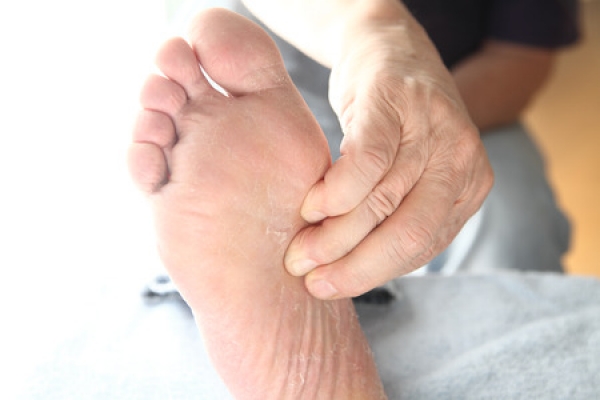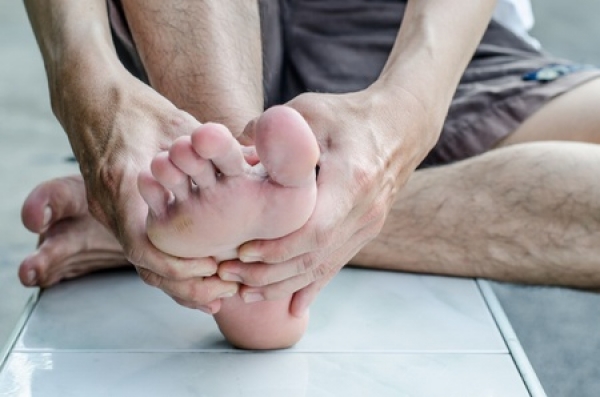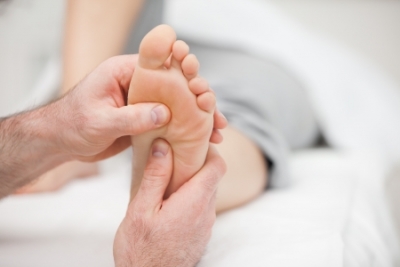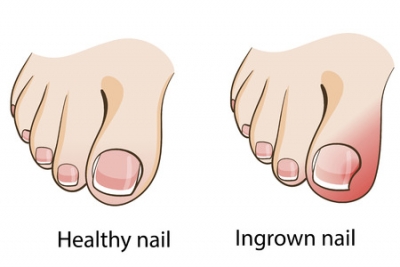Connect With Us
Blogs

Toe Pain (4)
Are you experiencing acute pain in the ball of your foot? Is the pain more noticeable with increased activity or when you are walking barefoot? Have you noticed a callus beginning to form in the spot where the pain is? If you answered yes to one or more of these questions, you may be suffering from a condition we treat at Superior Foot & Ankle Care Center known as metatarsalgia.
Your metatarsal bones run down the middle of your foot from your ankle to each of your 5 toes. When the nerves between two of the metatarsals become inflamed, it causes pain, and this is known as metatarsalgia.
What’s Behind the Pain
Basically, metatarsalgia occurs when there is either too much pressure or an uneven pressure applied to the metatarsals. This can have a wide range of causes, however, including:
- Overpronation
- Arthritis
- Foot injuries
- Aging
- Weight gain
- Overuse from weight-bearing sports such as running
- Foot deformities
- Morton’s neuroma
- Poorly fitting footwear
- Standing for long periods on hard surfaces
Getting Relief
The treatment for metatarsalgia will depend on the cause. The first step is to have our podiatrists, Dr. Victoria Foley and Dr. Constance Omelas examine your feet. The foot doctor will also want to get your medical history and ask about your recent activities. Once the reason behind the metatarsalgia has been found, the foot doctor may recommend one or more of the following:
- Icing the area and taking over-the-counter anti-inflammatory medications to relieve pain and inflammation
- Resting your feet from sports and physical activities that aggravate the ball of the foot
- Custom orthotics to correct overpronation or other biomechanical issues
- Wearing properly fitting, supportive shoes
- Losing weight if you are overweight to reduce pressure on your feet
If you are experiencing pain or pressure in the ball of your foot, contact our Long Beach office today for an appointment by calling: (562) 420-9800.
Hallux rigidus is a form of degenerative arthritis that affects the big toe and one that we at Superior Foot & Ankle Care Center would rather treat in its earlier stages rather than its later ones. What starts out as stiffness in the toe joint will eventually progress to pain, decreased the range of motion and even a frozen big toe joint as the cartilage continues to deteriorate. Being unable to bend your big toe affects all motions that involve pushing off with the toe. These include essential activities like walking, running, squatting down and climbing stairs. At some point even standing and putting any weight on the toe at all can be extremely painful. In addition, hallux rigidus can lead to the development of other conditions such as bunions, bone spurs and calluses.
Who’s at Risk?
There are a number of factors that can increase your risk of developing hallux rigidus and not all of them are within your control. Structural abnormalities and faulty foot mechanics are often to blame for this disorder and those can be inherited or the result of another condition like flat feet or excessive pronation of the ankles which can cause stress to the toe joint. Hallux rigidus, like other forms of arthritis, may develop in a joint that was previously injured. It can also be the result of overuse of a sport that requires pushing off with the toe or a job where you are frequently squatting or doing other activities that bend the toe.
What Can be Done?
If after assessing the state of your big toe joint through examination and x-rays our podiatrists, Dr. Victoria Foley and Dr. Constance Ornelas diagnose hallux rigidus (or hallux limitus—the same condition at an earlier stage) the next step will be determining the correct treatment plan for you.
The foot doctor may recommend rest, icing and over the counter anti-inflammatory medications such as ibuprofen to bring relief of symptoms. Cortisone injections, changes in shoe choice, custom orthotics and physical therapies are all options that can help increase the range of motion and slow the progression of arthritis. In cases that are too far progressed or where there are additional complications, surgery may be the best option,
To learn more, contact our Long Beach office by calling: 562-420-9800.
Most of the time we don’t think much about our toes. They are, however, quite necessary for providing the balance and assistance needed to support the weight of your body and for common activities like walking and running. At Superior Foot & Ankle Care Center we find patients pay attention to their toes when they hurt and stop functioning as they should. Below are some common reasons for toe discomfort:
Hammertoes—with this condition, which can be caused by a genetic muscle problem, faulty foot mechanics or an abnormal bone length, one or more toes curls downward causing the namesake “hammer” appearance. In the early stages, the toes remain flexible but if left untreated they will become rigid, unable to be straightened. Corns, calluses and more severe disability can occur. There are a number of conservative and surgical treatment options available depending on the severity and progression of hammertoes.
Toe Spurs—this is a bone spur that occurs in your toe. It may form as part of another foot problem and can cause quite a bit of pain when walking. Usually a minimal incision surgery is needed to eliminate the spur.
Curled Fifth Toe—usually an inherited condition, the pinky toe curls downward and moves under the next toe. This results in your bearing weight on the side of your toe instead of the bottom—ouch! In addition, curled fifth toes cause nail problems and corns. This problem can be surgically corrected.
Turf Toe—this is actually a sprain of the joint at the base of the big toe. It is usually caused by a sudden pushing off injury or a “jamming” of the toe, such as when a player’s foot gets stopped on artificial turf but the rest of the body continues moving forward. Turf toe can also be caused or exacerbated by repetitive pushing off actions common to sports such as football.
As you can see, the causes of toe trouble are varied and the treatment will depend on the diagnosis. For this reason it’s essential that you let one of our podiatrists, Dr. Victoria Foley and Dr. Constance Omelas, examine your toes and find out the cause of your pain. To get relief from your toe pain contact our Long Beach office sooner rather than later for an appointment by calling: 562-420-9800.
Ingrown toenails (officially known as onychocryptosis), a condition we see frequently at Superior Foot & Ankle Center, are painful and potentially can lead to an infection. They occur when the side of a nail begins to grow back into the skin and are seen most often on the big toe. As the nail becomes ingrown the skin around it usually becomes inflamed, red, warm and very tender to the touch. Once the nail actually breaks through the skin, bacteria have an entry point and an infection may occur.
Causes
There are several factors that can make an ingrown nail more likely. Some are preventable but others are not. Common causes include:
- Poor nail trimming—this is the most common reason ingrown nails develop. If nails are shaped so that they curve on the sides or if they are trimmed too short, the skin may fold over the corner of the nail and the nail will begin to grow inward.
- Heredity—for some people ingrown nails are a genetic tendency.
- Shoes and socks that don’t fit—if you wear footwear that is too tight or spend a considerable amount of time in high heels that force all your toes together in the front of the shoe, the pressure may push the nail into the skin.
- Overuse or trauma—patients who run or play sports that involve frequent kicking are more likely to develop ingrown toenails. Dropping a heavy object on your toe or severely stubbing it can also be a catalyst.
- Nail problems—a fungal or bacterial infection or nail deformity can be a cause.
Treatment
If you have an ingrown toenail that soaking in warm water isn’t releasing, contact our Long Beach office by calling: (562) 420-9800 and let our podiatrists, Dr. Victoria Foley and Dr. Constance Omelas help you eliminate this painful condition. Don’t attempt “bathroom surgery” on an ingrown nail! Notching, sticking cotton under the nail and other “home remedies” not only are ineffective, but they can result in a more serious injury and infection.




